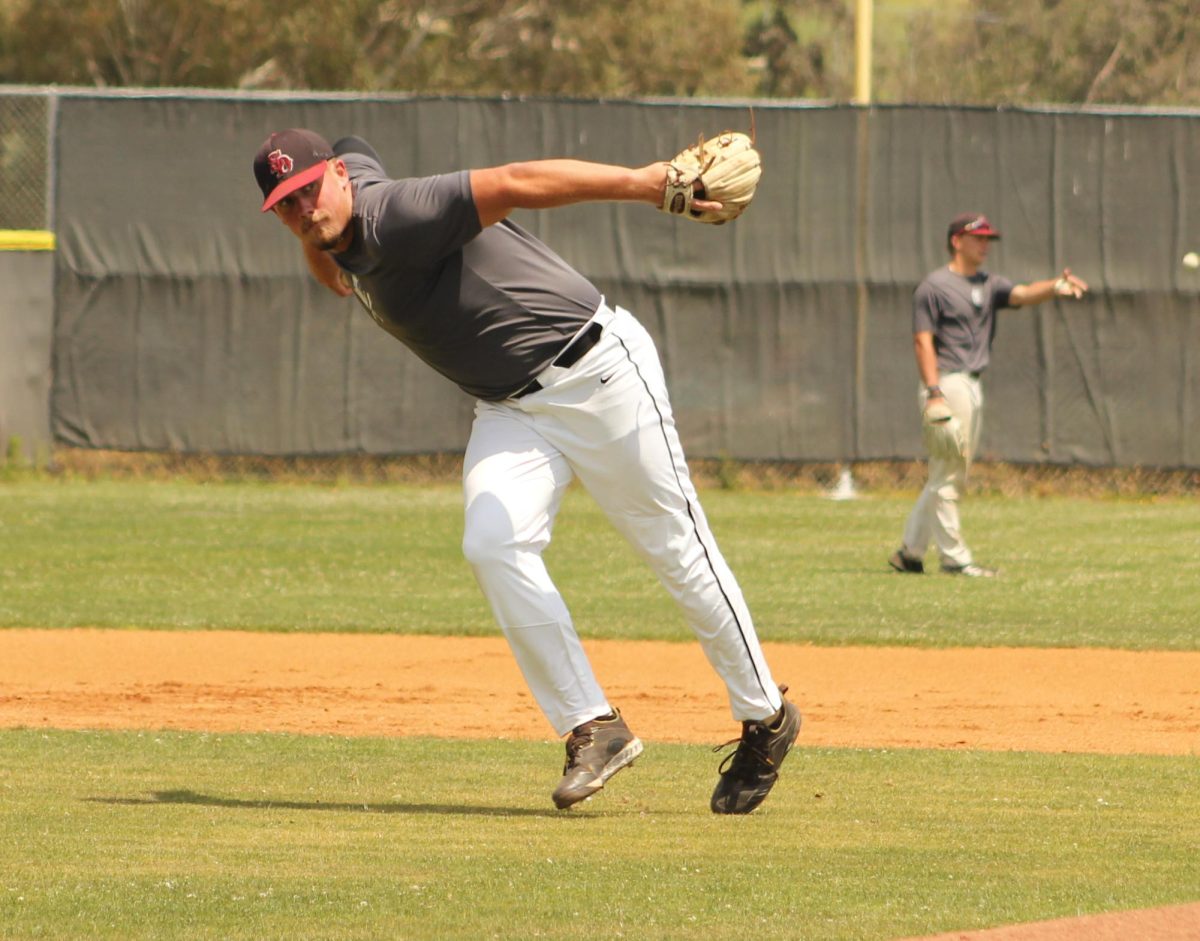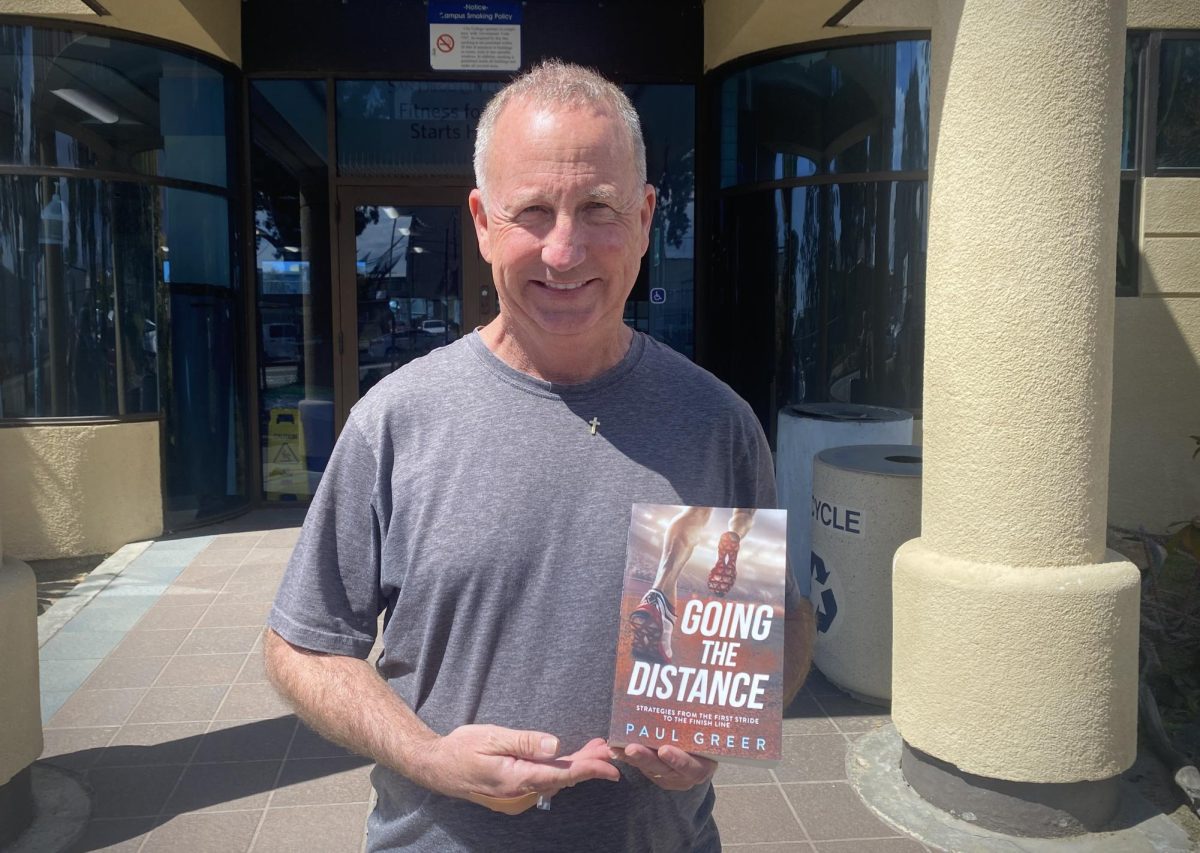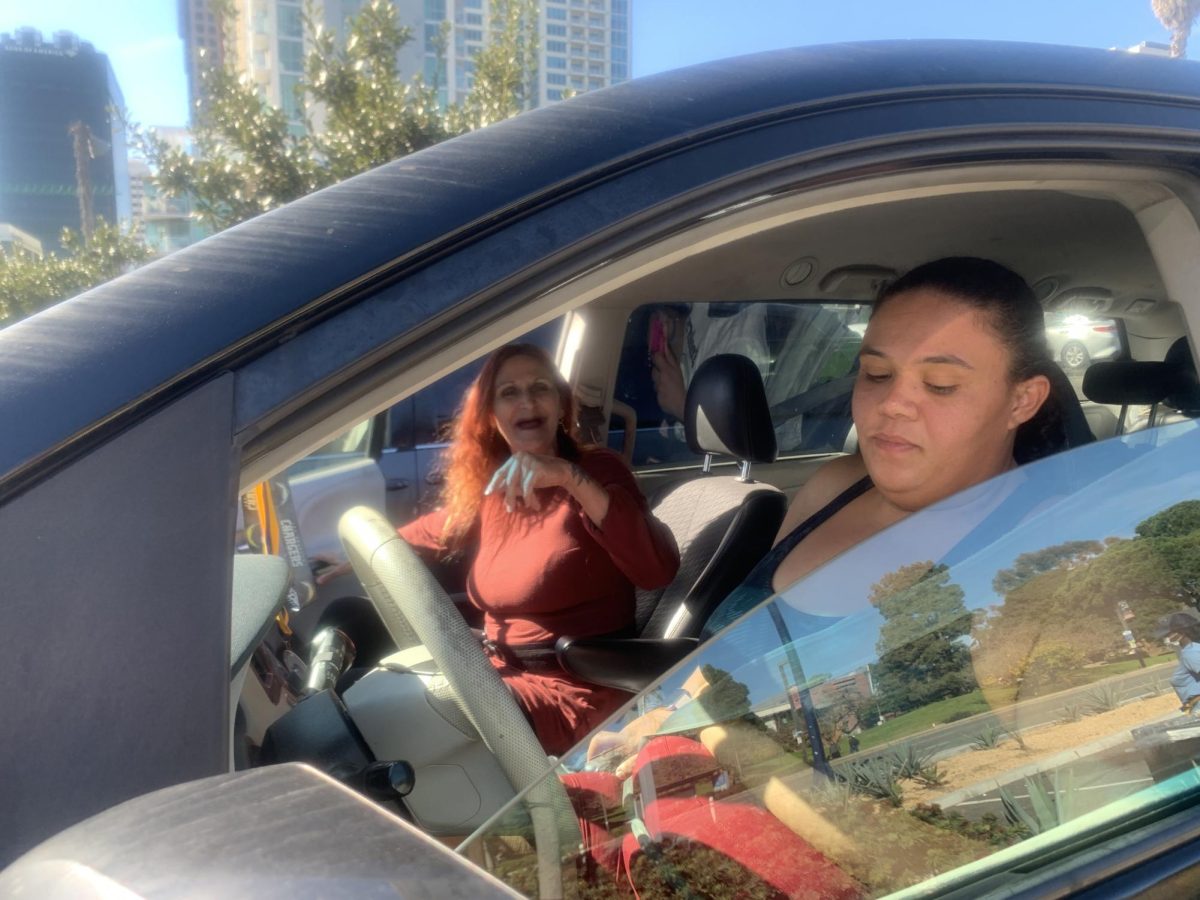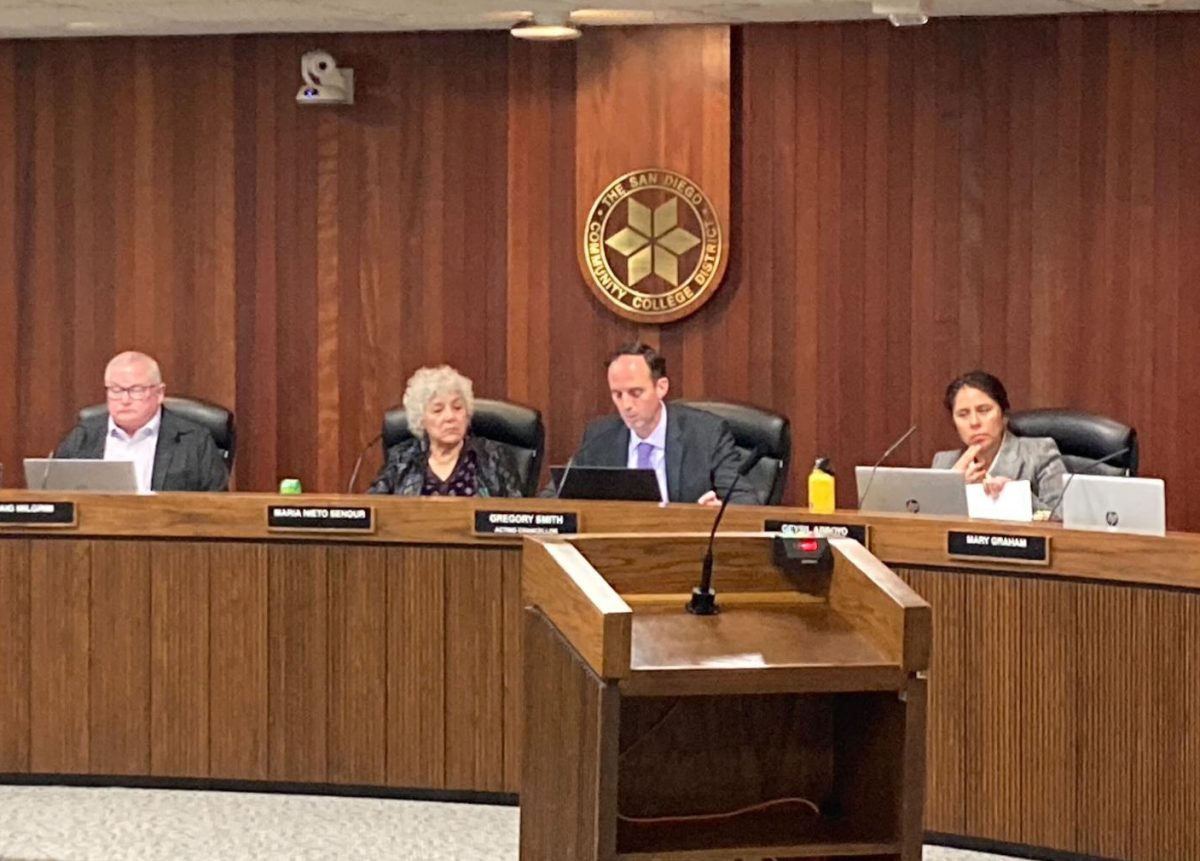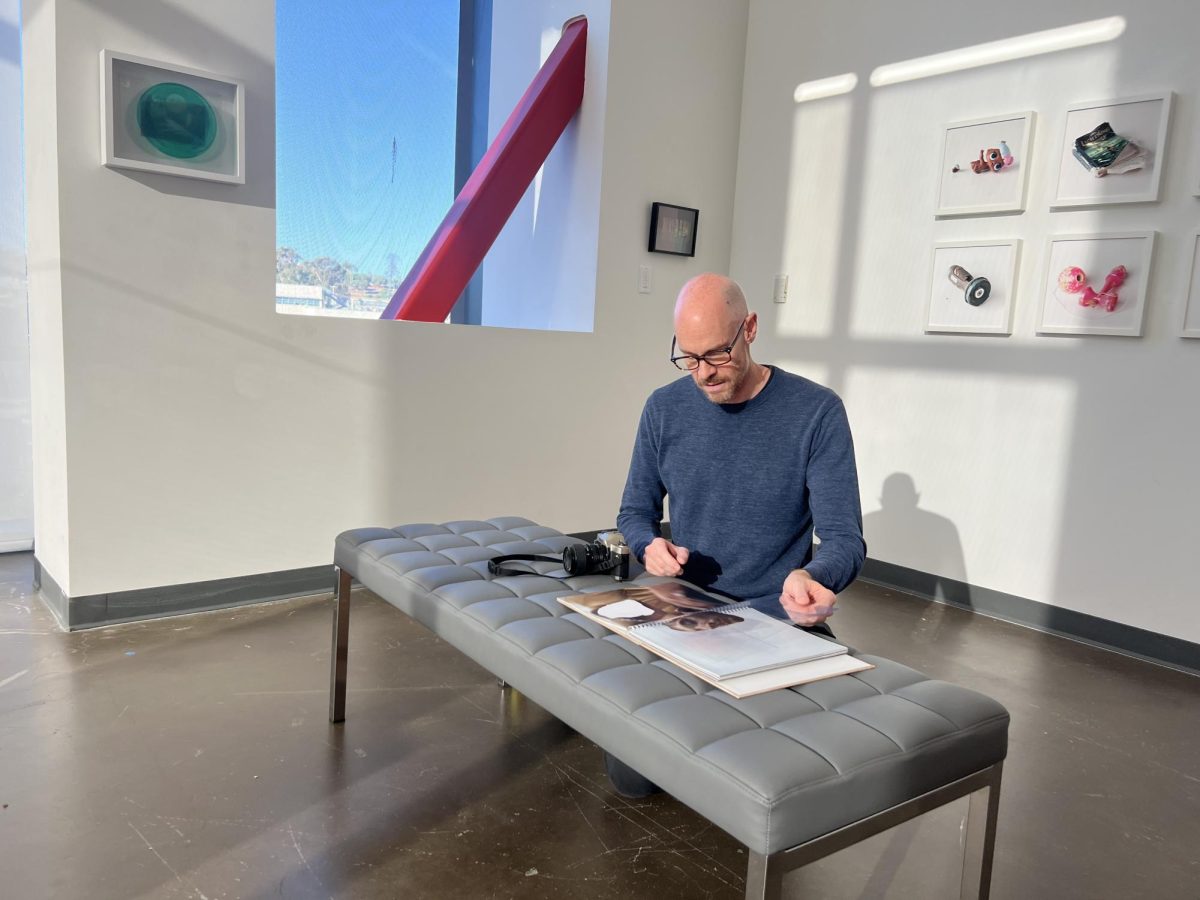Sonjiala Hotchkiss
City Times
In 1995, students in City’s field archaeology class experienced the magic of excavating an area that was used by humans more than 7,300 years ago. Since 1992, students in the class, taught by Professor Steve Bouscaren, have been adding to the historic and prehistoric record of Penasquitos Canyon, a federal park and natural wildlife preserve.
Apart from being home to the oldest historic residential structure in San Diego, Penasquitos Canyon also has several other historical features such as a spring house containing an artesian well and a zanja, an area dug out and then lined with rocks to serve as a passageway for water. Features are historical objects or structures that are not easily moved. The current class is working on unearthing the zanja, probably built by the Spaniards around A.D. 1800.
A current class member’s mother, Susan Hector, did much of the reconstruction work on the spring house. Susan Hector taught at City College as an adjunct, and she also formerly served as Director of San Diego County Parks and Recreation.
Bouscaren assures that students will also unearth historically significant artifacts during the process of exposing the zanja. Previous classes have found stone tools, shell, tile and beads, among other things. Federal laws define objects to be of historical significance if they are at least 60 years of age, while California laws set the limit to at least 40 years of age.
Most professional archaeological work falls under the category of cultural resource management (CRM), the business of conducting archaeological surveys and excavations to determine whether a site has enough archaeological significance to halt, usually temporarily, any planned development. Pat McGinnis, now the senior archaeologist at a local CRM firm, was part of the student team that made the 7,300-year-old discovery.
McGinnis, not originally an anthropology major, discovered during the field archaeology class that, “Wow, I can make money doing this.” McGinnis said that he enjoys hiring students and having the opportunity to give someone that chance that was given to him as a college student. McGinnis currently teaches part-time at City College as well.
Bouscaren said that current students are often hired to work on CRM projects. Two anthropology majors were able to find work, one making $14 per hour and the other making $18 per hour, after taking the archaeological analysis class.
The City College archeological fieldwork class has been featured on PBS radio and television broadcasts. The class has also been featured in local newspapers and media. Discovering artifacts that date human use of the site to over 7,300 years established Peñasquitos Canyon as a prehistoric area of greater interests.
To quote a former student, the canyon served as a type of “prehistoric truckstop.” The abundant wildlife and bubbling stream make the canyon an ideal place to stop and refresh during a journey.
Penasquitos Canyon has been used by a variety of people in historical and prehistorical times, including Native American, Spanish, Mexican, and Anglo peoples. With an excitement in his eyes that belies his years of experience, Professor Bouscaren speaks to students of magical feeling attached to placing ones hands on something that was used by another human hundreds or even thousands of years ago. Speaking to students, present and past, it is clear that his excitement is incredibly contagious.

